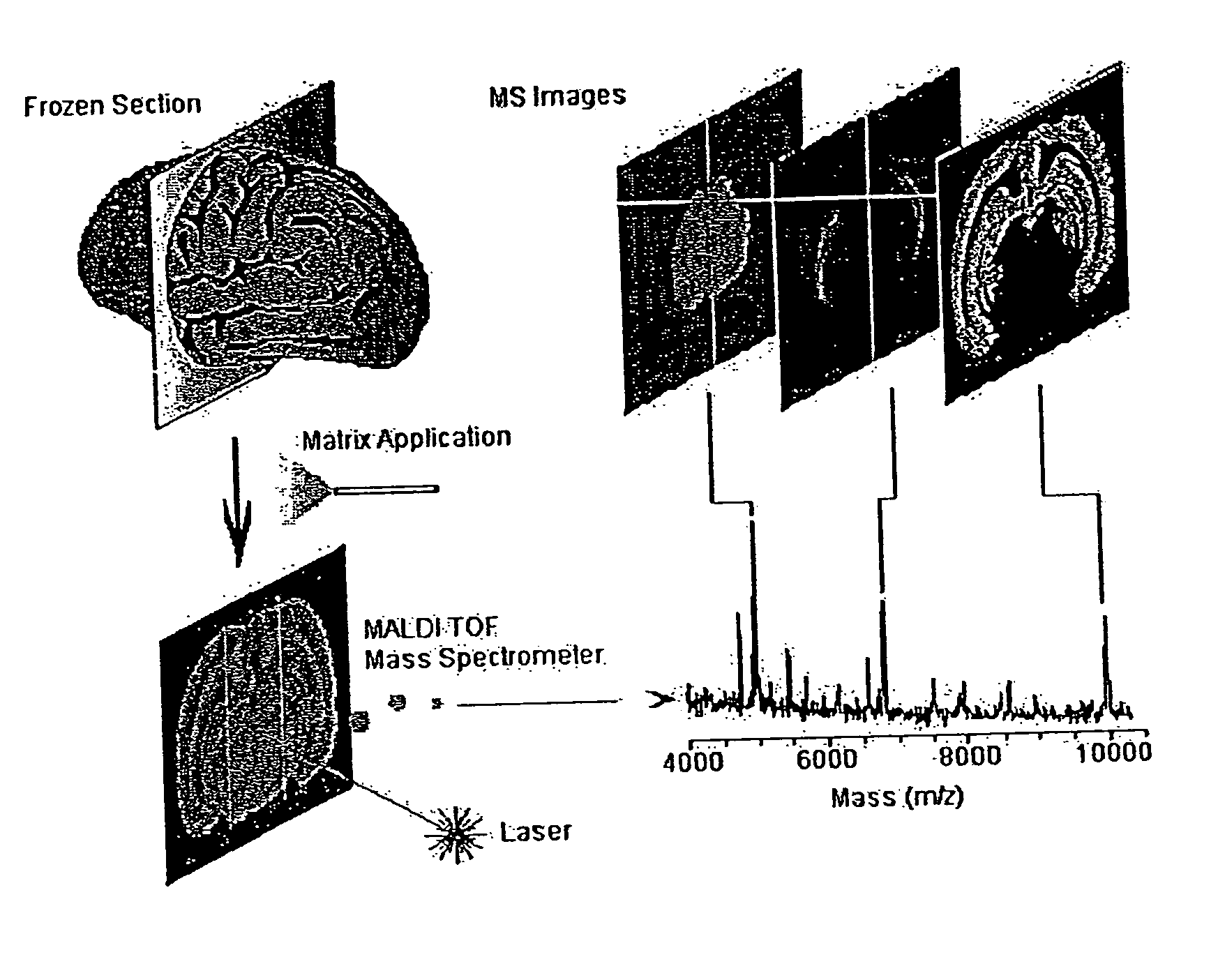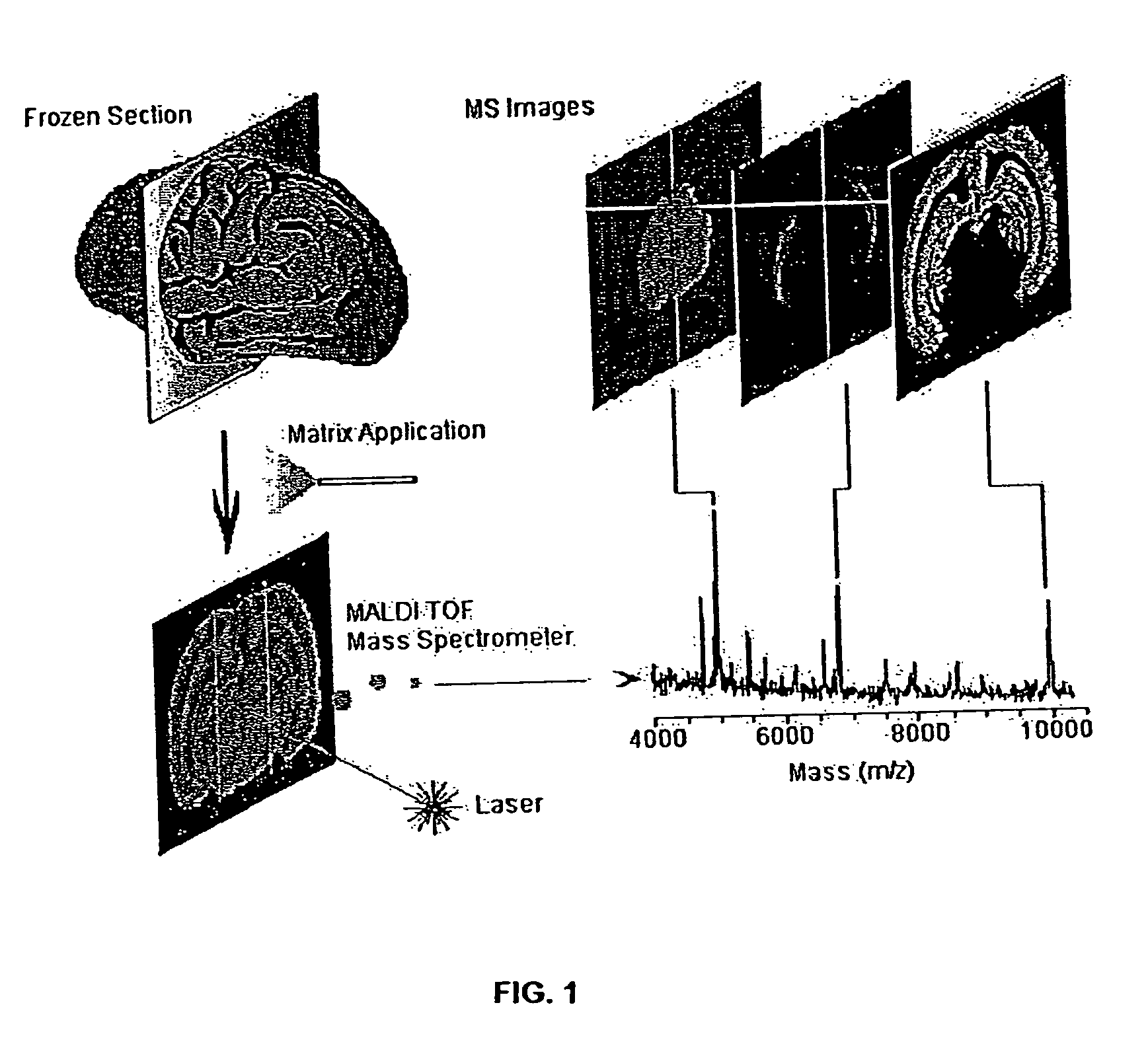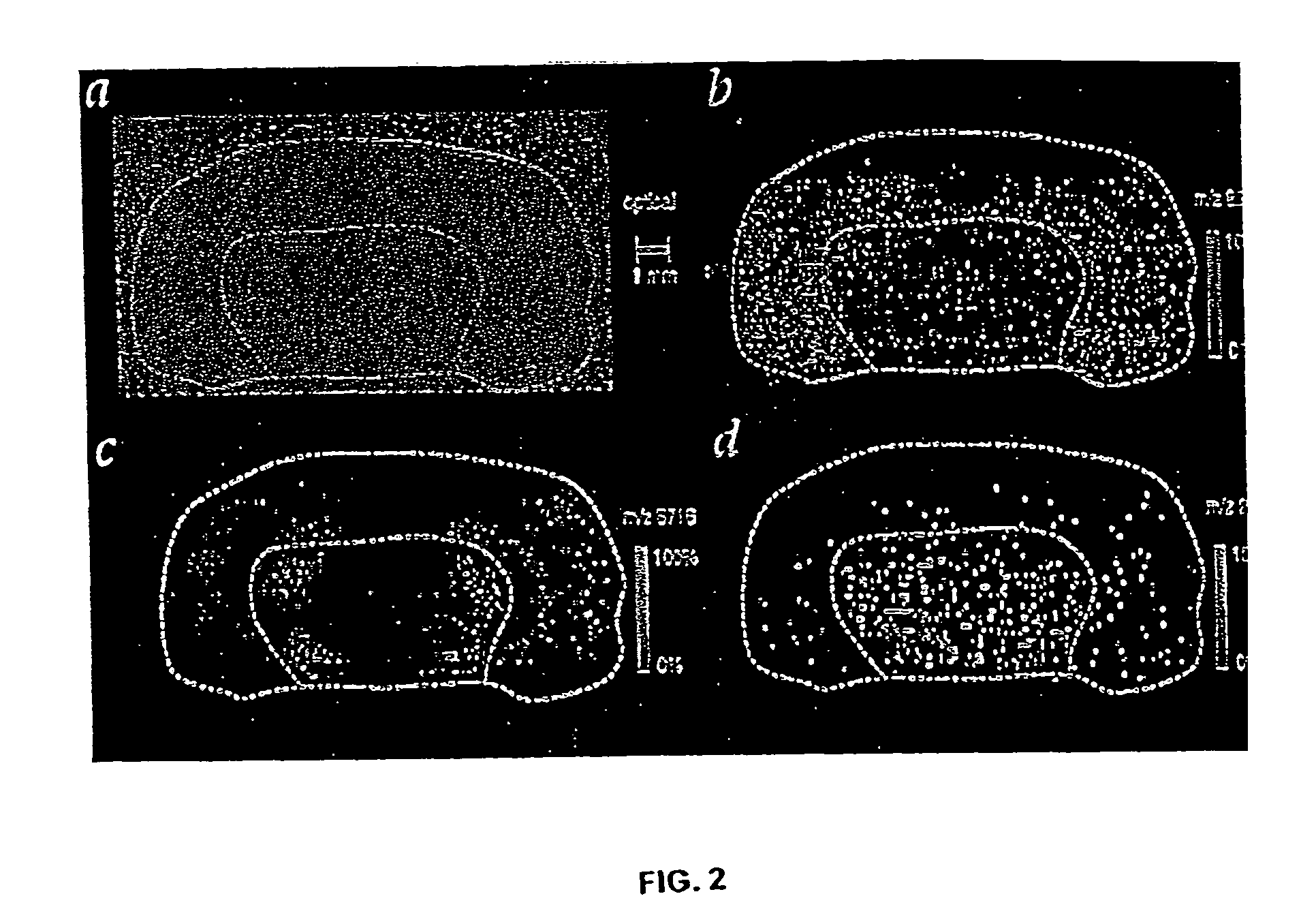Methods and apparatuses for analyzing biological samples by mass spectrometry
a mass spectrometry and biological sample technology, applied in the field of medical imaging, analysis, monitoring and diagnostics, can solve the problems of non-specific and inaccurate techniques, conventional technology does not employ maldi ms techniques to effectively analyze proteins in clinical samples, and conventional technology does not use maldi ms techniques to perform the effect of analyzing proteins
- Summary
- Abstract
- Description
- Claims
- Application Information
AI Technical Summary
Problems solved by technology
Method used
Image
Examples
example 1
General Methodology
[0061]FIG. 1 illustrates methodology suitable for embodiments of this disclosure. The illustrated methodology of FIG. 1 was designed for the spatial analysis of tissue by MALDI mass spectrometry. In this embodiment, frozen sections are mounted on a metal plate, coated with an UV-absorbing matrix and placed in a mass spectrometer. A pulsed UV laser desorbs and ionizes analytes from the tissue and their m / z values are determined using an instrument such as a time-of-flight analyzer. From a raster over the tissue and measurement of the peak intensities over several spots (which may be thousands of spots), mass spectrometric images may be generated at specific molecular weight values.
[0062]For the molecular image analysis, tissue samples can be prepared using several protocols: (a) direct analysis of fresh frozen sections, individual cells or clusters of cells isolated by laser-capture microdissection or other cell isolation procedure, or (b) contact blotting of a tis...
example 2
Application to Mammalian Tissue
[0063]The inventor and assistants have used imaging MS to study normal tissue sections from mouse brain and human brain tumor xenograph sections. These samples contained well-defined regions, many of which had subsets of proteins and peptides in a unique distribution or array. The bilateral symmetry of the brain provided an internal confirmation of the localized distribution of proteins and the homogeneity of the prepared tissue sections. An optical image of the normal mouse brain section fixed on a metal plate and coated with matrix is shown in FIG. 2A. The inventor and assistants scanned the section by acquiring 170×90 spots with a spot-to-spot center distance of 100 μm in each direction. Ions occurring in 82 different mass ranges were recorded, and images were created by integrating the peak areas and plotting the relative values using a color scale. For specific molecular images, data was acquired in a window delimited by two mass-to-charge (m / z) u...
example 3
Preparation of Tumor-Bearing Tissue for Molecular Imaging
[0064]Tumor-bearing tissues were generated by subcutaneous implantation of human glioblastoma cells (D54) into the hind limb of a nude mouse. After tumors grew to about 1 cm in diameter, they were surgically removed them from the mouse and immediately frozen using liquid nitrogen. For image analysis, the inventor cut the tumor tissue using a microtome in 12-μm thick sections orthogonal to the point of attachment to normal tissue. Frozen sections were processed following the protocol described above before image analysis by MS.
[0065]The optical image of a frozen human glioblastoma section taken immediately following mass spectrometric imaging is shown in FIG. 3A. The orientation in FIG. 3A is such that the actively growing area of the tumor is at the top of the figure, and the point where the tumor was attached to the healthy tissue at the bottom. The fine line (cross-hatched) pattern on the optical image was produced by laser ...
PUM
| Property | Measurement | Unit |
|---|---|---|
| diameter | aaaaa | aaaaa |
| distance | aaaaa | aaaaa |
| diameter | aaaaa | aaaaa |
Abstract
Description
Claims
Application Information
 Login to View More
Login to View More - R&D
- Intellectual Property
- Life Sciences
- Materials
- Tech Scout
- Unparalleled Data Quality
- Higher Quality Content
- 60% Fewer Hallucinations
Browse by: Latest US Patents, China's latest patents, Technical Efficacy Thesaurus, Application Domain, Technology Topic, Popular Technical Reports.
© 2025 PatSnap. All rights reserved.Legal|Privacy policy|Modern Slavery Act Transparency Statement|Sitemap|About US| Contact US: help@patsnap.com



